
views
X
Research source
Examining the Milk
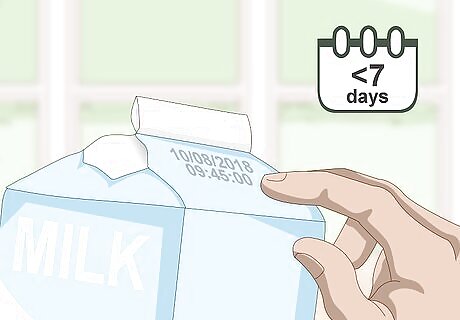
Confirm the milk is less than 7 days past its sell-by date. If milk is properly stored, it will last for 7 days beyond the sell-by date listed on the container. However, if the date has passed and the milk has been left out at all, it's highly probable that your milk is bad. How long milk lasts depends on the amount of fat and lactose in the milk. Whole milk may only last 5 days after the expiration date. However, lactose-free or fat-free milk may last as many as 10 days after the expiration date. If the milk expired more than a week ago, it's generally a good idea to throw it out, even if it looks normal and doesn't smell bad.
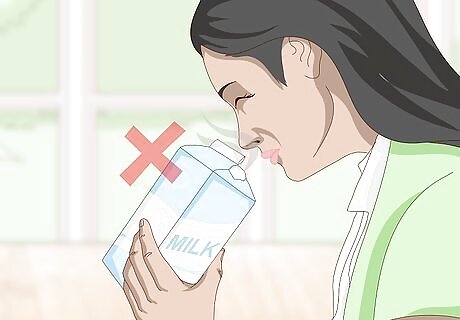
Smell the milk for an unpleasant odor. Sniffing your milk is the first and perhaps most obvious way to tell if it's gone bad. Fresh milk won't have much of a smell at all. In contrast, soured milk has an unpleasant odor. If you immediately recoil when you smell the milk, it's likely gone bad. Even if the milk otherwise looks okay, if it smells so bad that you pull back when sniffing it, you'd be better off not to drink it. If you have a hard time telling if it smells off, get someone else to smell it, or use other methods to examine or test the milk to be sure.

Check the milk's consistency for chunks or lumps. Fresh milk is a thin liquid that pours smoothly. The consistency depends on the fat content. Creams or whole milk are thicker than skim milk. However, the milk should move and pour smoothly. If you notice any lumps in the milk, it has gone bad. You may have to slosh the milk around in the container to see these, as lumps typically settle to the bottom. You can also examine the interior of the milk container. If there is solid residue on the inside of the container, the milk may be bad.
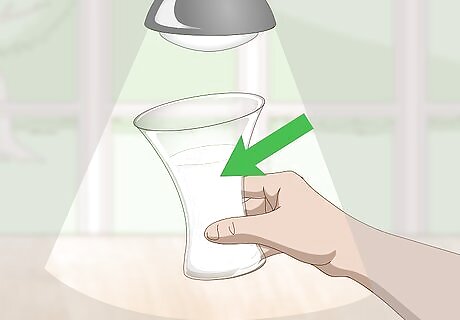
Inspect the milk's color for yellowing or dinginess. Pour the milk into a clear glass and hold it up to the light. If the milk is still good, it will be a pure, clean, white color. Milk that is bad typically will be a dingy or yellow shade. If you have a hard time identifying the color of the milk, set a white sheet of paper behind or next to the glass and compare. If the milk has a yellowish tint, it's likely bad.
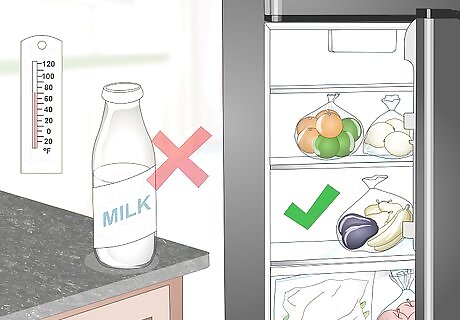
Determine if the milk was left out at room temperature. Milk must be kept cold if you want it to stay fresh. If it's left out at room temperature for an extended period of time, it might go bad – regardless of how old it is. If you know the milk was left sitting out for more than 1 hour, it's likely bad. If you live with your family or with roommates, it may not be possible for you to determine whether the milk was left out. Just ask around and try to get the best information.
Microwaving the Milk to See if It's Bad
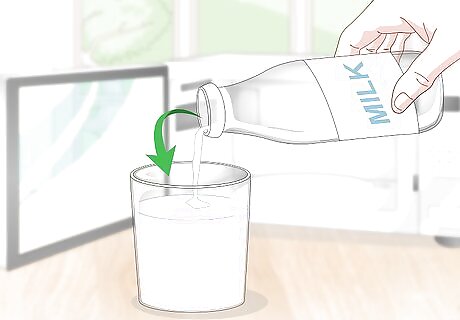
Pour the milk into a microwaveable glass. If you examined the milk and still aren't sure whether it's bad, you can test it. Pour a small amount of milk into a clear glass, to the height of about 1 inch (2.5 cm). Test only a small amount so you can use the remaining milk if it's still good.

Microwave the milk for 30-60 seconds. Place the glass of milk in the microwave and heat it for 30 seconds to a minute. Use shorter periods of time for larger microwaves of higher wattages. If you're not sure how long to heat the milk, start with 30 seconds. If the milk isn't hot after 30 seconds, heat it for another 30 seconds.

Throw out lumpy or gooey milk. Swirl the warm milk around to see if it remains a thin liquid or has started to thicken. If the milk becomes lumpy or gooey after being heated, that's a sign that it's gone bad. Milk curdles because the high acidity in the soured milk causes proteins in the milk to bond together, creating lumps. It's normal for the milk to have a thin skin on top when heated. That doesn't necessarily mean the milk is bad. However, when you remove the skin, the heated milk underneath will be a thin liquid if it's still good.
Testing the Acidity of the Milk
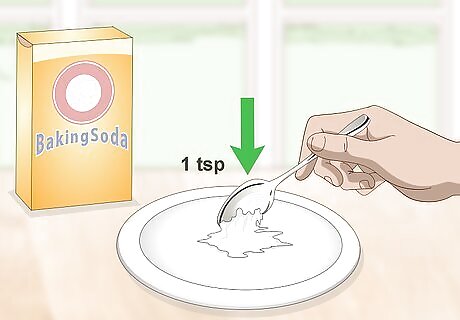
Pour 1 tsp (10.84 g) of baking soda into a saucer. You don't need a large amount of baking soda for this test – just enough that you'll be able to see its reaction to the milk. Make sure your baking soda is fresh. If it's old, it may not react as well. Generally, don't use the baking soda for this test if it's past the expiration date on the container.
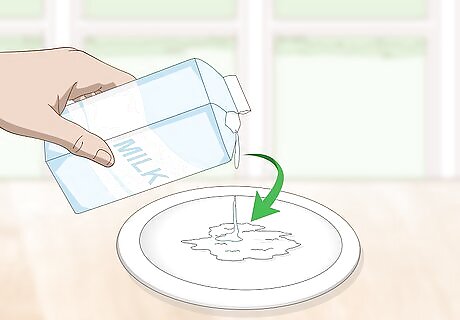
Pour a few drops of milk onto the baking soda. Use milk directly from the carton, rather than any milk that's been previously heated. You only need 1 or 2 drops of milk to determine how it reacts with the baking soda.

Look for the baking soda to bubble if your milk is sour. Baking soda does not react at all to fresh milk. Sour milk has a higher acidic content, which will cause the baking soda to release bubbles of carbon dioxide. The more bubbles there are, the more acidic your milk is. If you see any bubbles at all, the milk is likely not safe to drink. Even if your milk otherwise looks or smells fine, don't drink it if the baking soda bubbles.
Prolonging Your Milk's Life
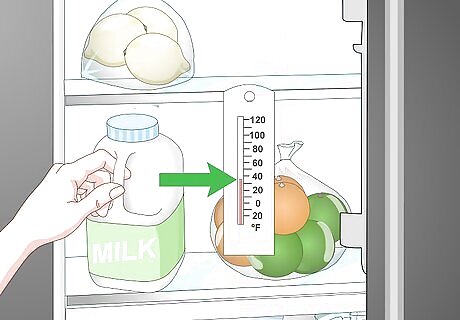
Keep your milk at temperatures below 40 °F (4 °C). Milk should be refrigerated at all times. If the container is left out on the counter at room temperature for an extended period of time, it will go bad more quickly. Storing your milk in the back of the fridge will ensure it remains cold. If you keep your milk in the door, it will be frequently exposed to varying temperatures as the door is opened and closed. This could reduce the usable life of your milk.
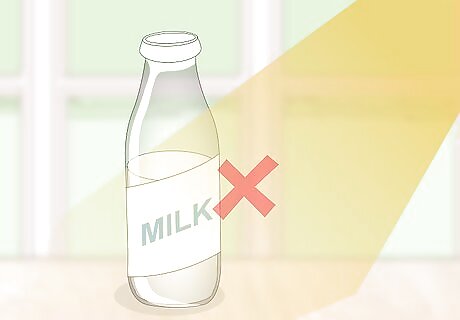
Avoid exposing the milk to light. Milk stored in clear glass or plastic containers won't last as long as milk in cardboard or colored plastic containers. Milk spoils when exposed to light, and even temporary exposure from opening and closing a refrigerator door will reduce the shelf life of your milk over time. If your milk is contained in a clear container, keep it in the back of the fridge shielded by other items to reduce light exposure.
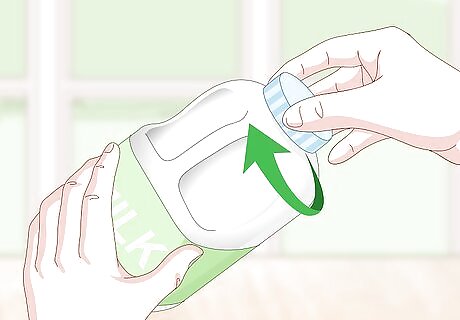
Seal the milk container tightly. Fresh milk that is exposed to air can go bad, even if it is otherwise stored properly. Make sure the lid is screwed on tightly. In most cases, you should leave it in the original container, which was designed to store milk. If the original container is damaged, transfer it to a pitcher or other container with a secure lid. Don't leave your milk in an open pitcher or glass, even in the refrigerator. Write the date from the original container on the new one. If the cap is loose, place a piece of plastic or wax paper over the cap and secure the cap over top. That will help ensure that your container is as airtight as possible.
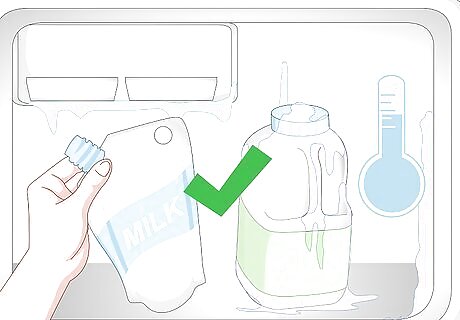
Freeze your milk as a last resort. You can keep your milk for up to 3 months in the freezer. If you live alone or don't use milk very often, this can be an economical option that will keep you from wasting milk. To thaw frozen milk, place it in the refrigerator or run cool water over the jug or carton. When you freeze milk, it changes the texture and color slightly. It may even have the consistency and color of soured milk when thawed, although it will still technically be good. The taste also may be less desirable. You can freeze most types of milk, including non-dairy milks and buttermilk.



















Comments
0 comment